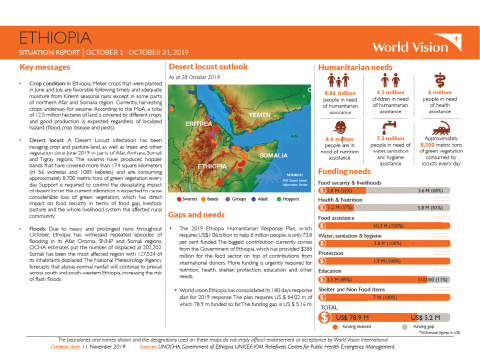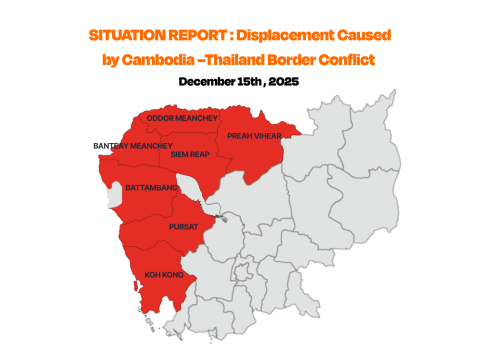Ethiopia - October 2019 Situation Report
Download
- Crop condition: In Ethiopia, Meher crops that were planted in June and July, are favorable following timely and adequate moisture from Kiremt seasonal rains except in some parts of northern Afar and Somalia region. Currently, harvesting crops underway for sesame. According to the MoA, a total of 12.5 million hectares of land is covered by different crops, and good production is expected regardless of localized hazard (flood, crop disease and pests).
- Desert locust: A Desert Locust infestation has been ravaging crop and pasture-land, as well as trees and other vegetation since June 2019 in parts of Afar, Amhara, Somali and Tigray regions. The swarms have produced hopper bands that have covered more than 174 square kilometers (in 56 woredas and 1085 kebeles) and are consuming approximately 8,700 metric tons of green vegetation every day. Support is required to control the devastating impact of desert locust. the current infestation is expected to cause considerable loss of green vegetation, which has direct impact on food security in terms of food gap, livestock pasture and the whole livelihood system the affected rural community.
- Floods: Due to heavy and prolonged rains throughout October, Ethiopia has witnessed repeated episodes of flooding in its Afar, Oromia, SNNP and Somali regions. OCHA estimates put the number of displaced at 202,202. Somali has been the most affected region with 127,524 of its inhabitants displaced. The National Meteorology Agency forecasts that above-normal rainfall will continue to prevail across south and south-western Ethiopia, increasing the risk of flash floods.
Share



